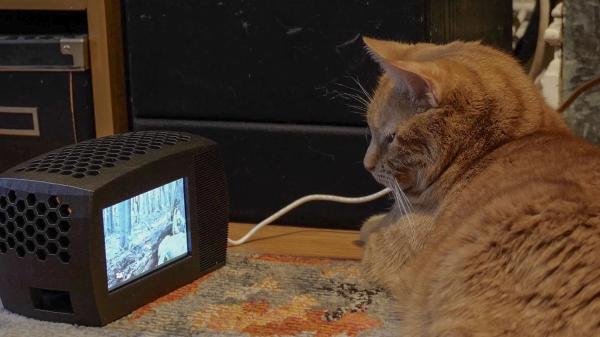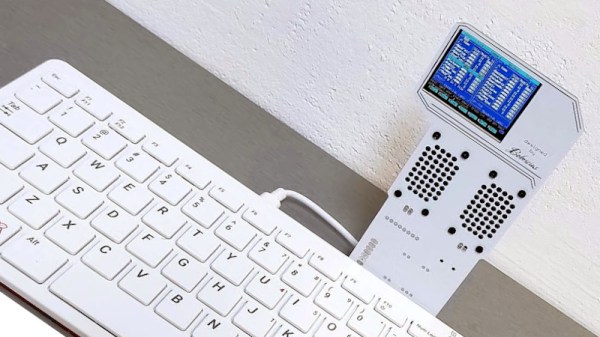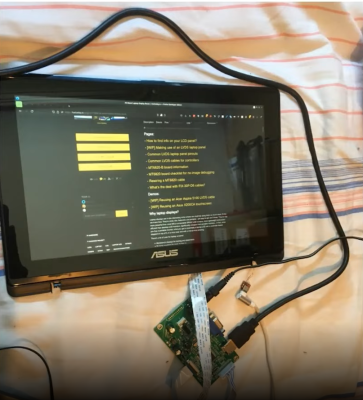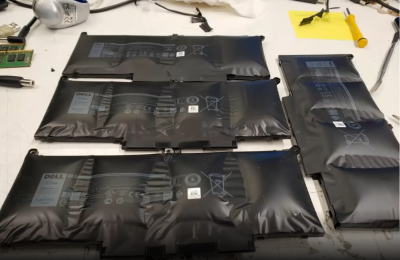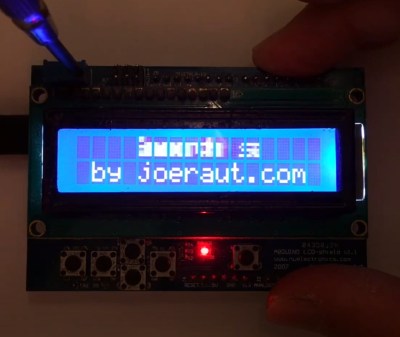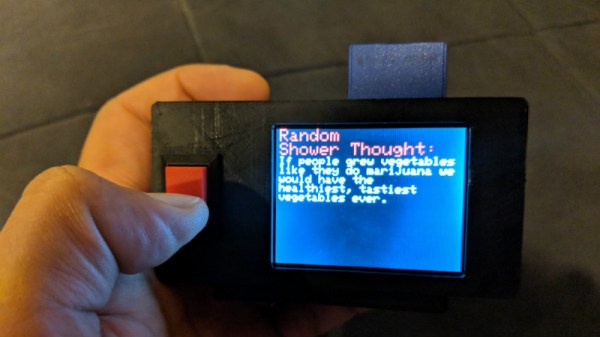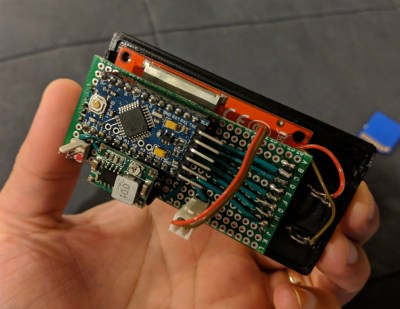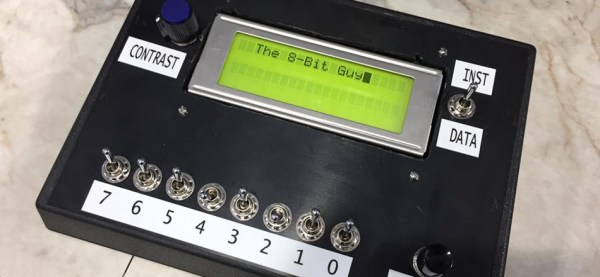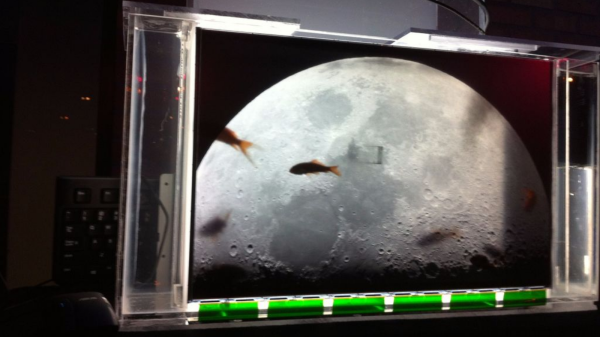Cats are wonderful creatures to have around, and they provide us with hours of entertainment. So why not do a little something to entertain them in return? That’s exactly what [Becky Stern] did by making a cat TV that shows YouTube videos of birds and other cat-approved content. Not all cats seem to care about TV, but [Becky]’s cat Benchley really gets into it.
As you may have guessed, this is a fairly simple build, consisting largely of a Raspberry Pi, a speaker, and a screen — a 5″ HDMI LCD display to be exact. Seems like a nice size for cats. After getting the cat-puter up and running, [Becky] set about designing a 3D-printed enclosure to turn it into a TV. The first draft looked great in marble-effect filament, but lacked breathing holes for the Pi, so the final version has a nice honeycomb pattern that is too small for curious cat paws to fit through.
What their paws can do is accidentally pause the video via the touch screen, so [Becky] swapped the USB cable for a charge-only to prevent this. Be sure to check out the build video after the break, because there is plenty of cat cuteness to be had. [Benchley] was so into it that he went looking around back for cats and squirrels inside the box.
Would you rather not encourage your cats to lie about the house watching TV all day? Make them play piano for their dinner.

